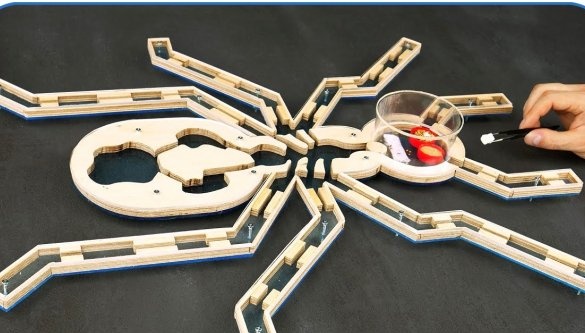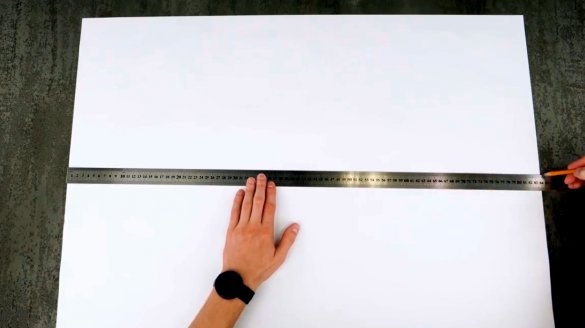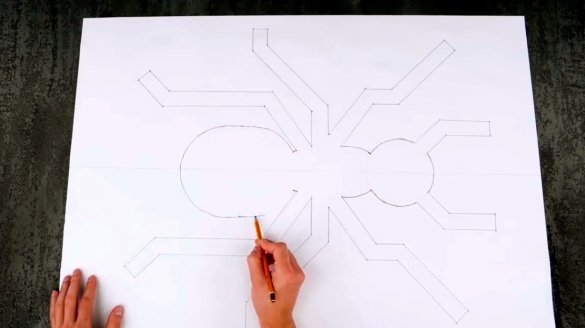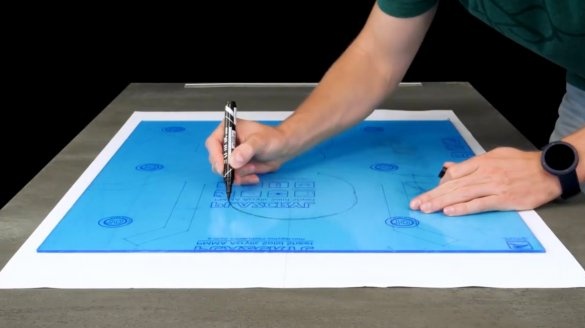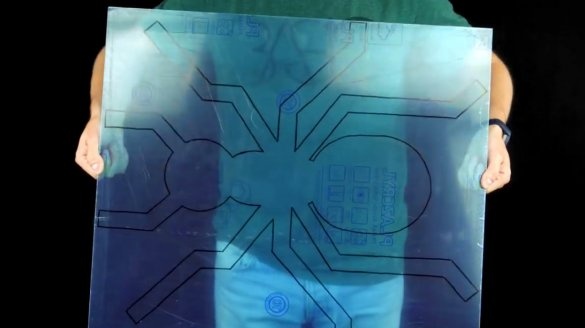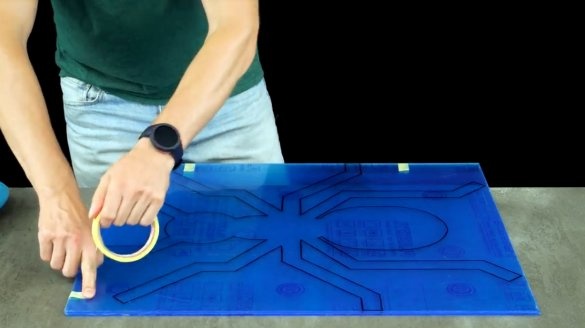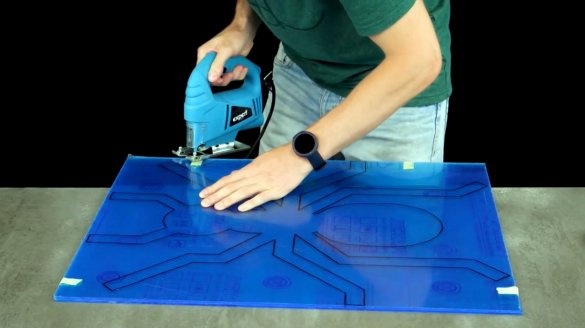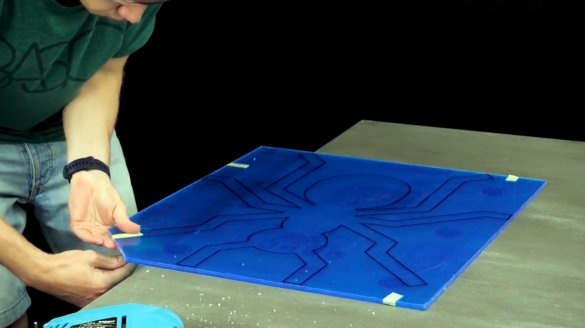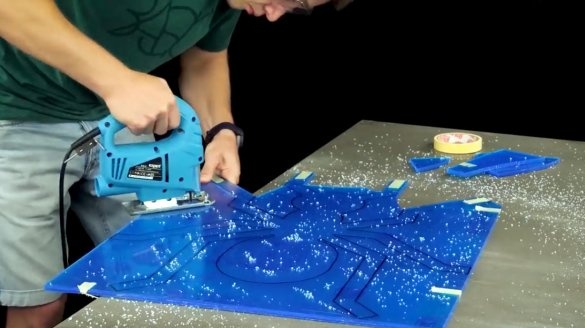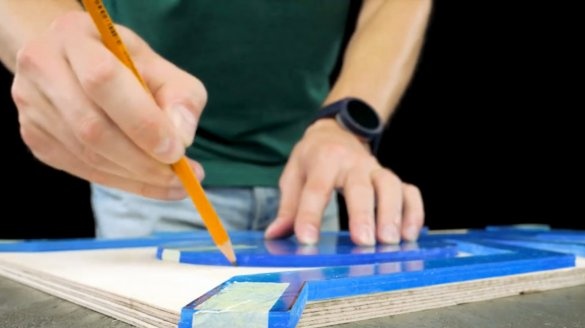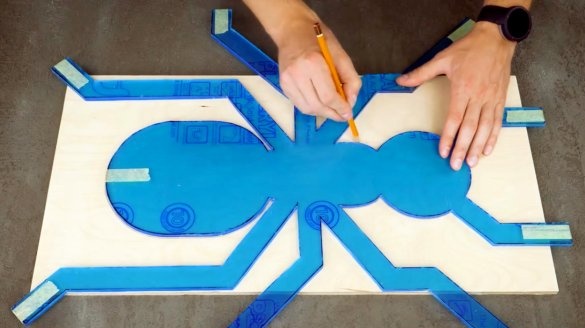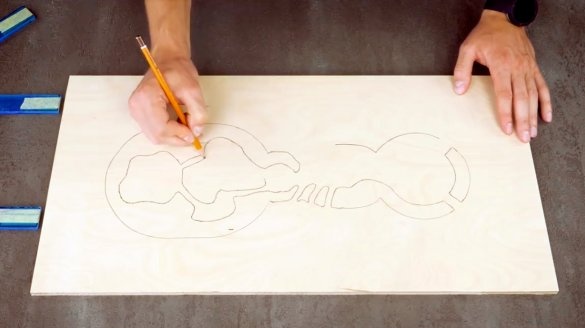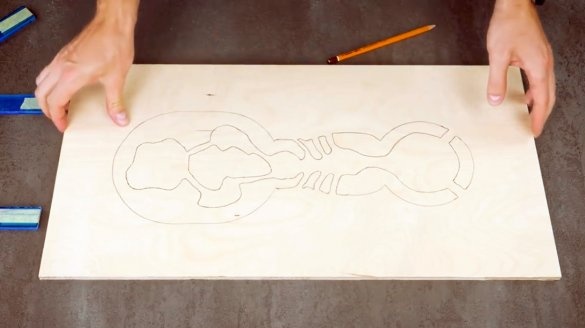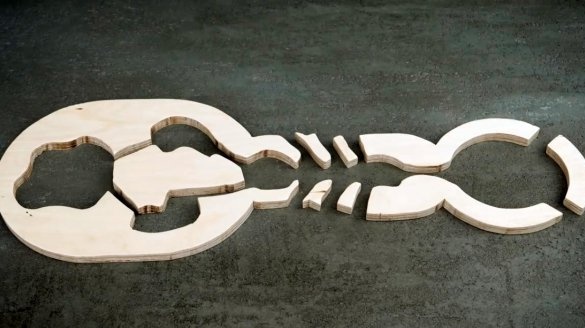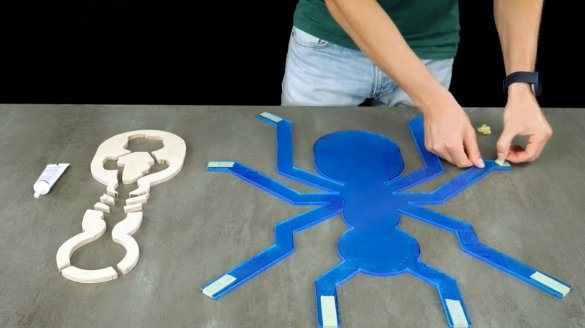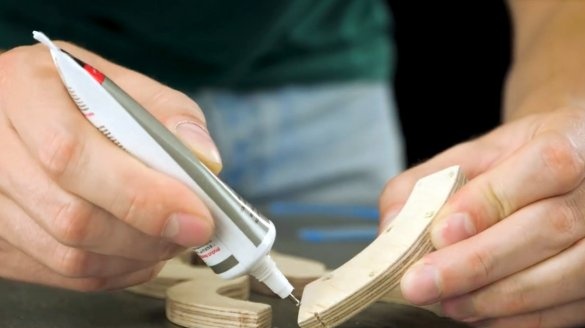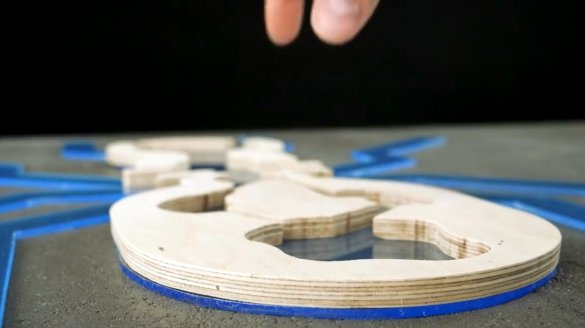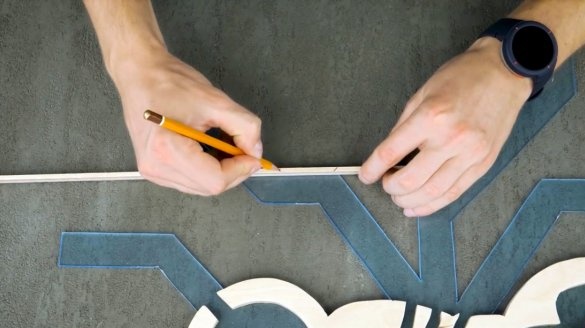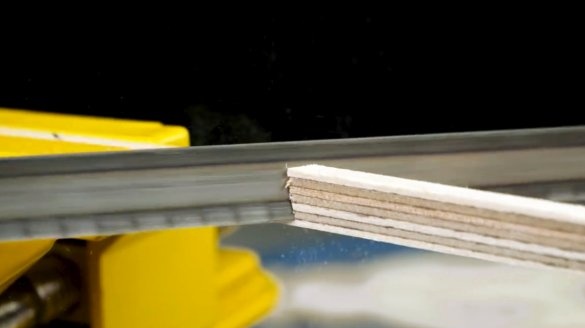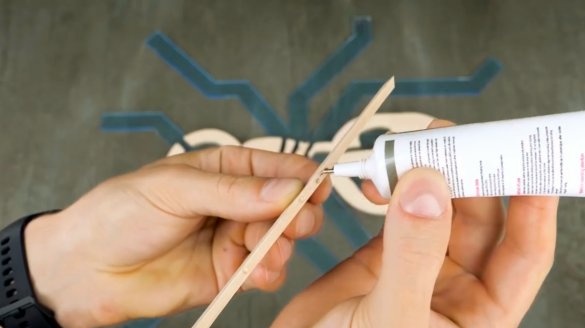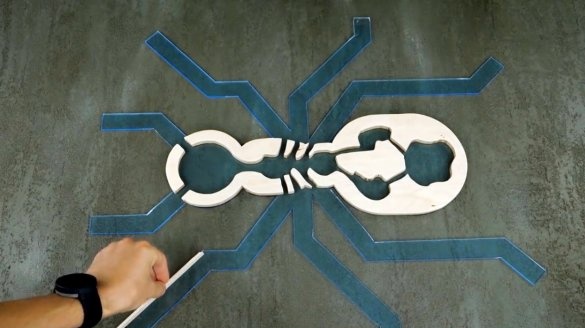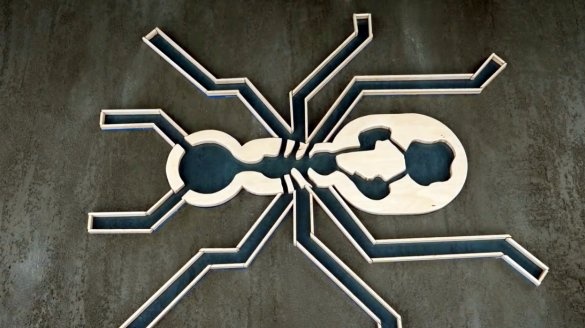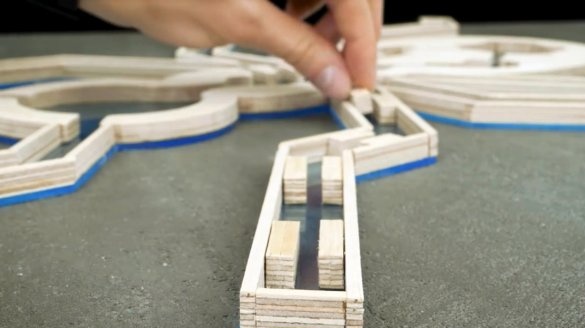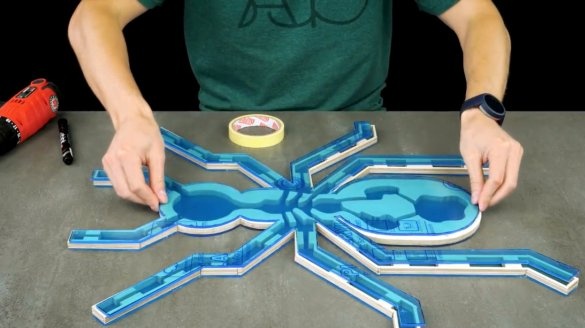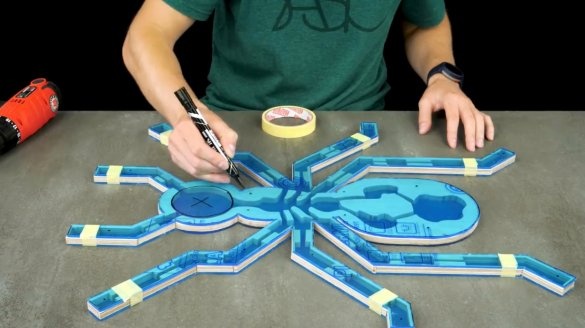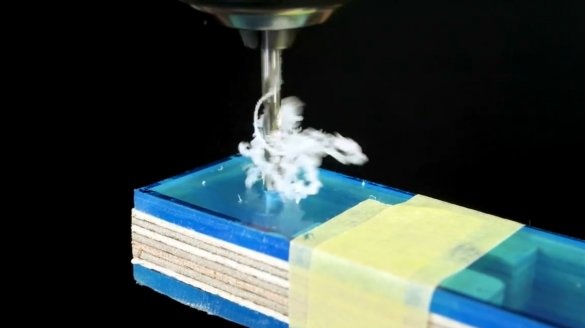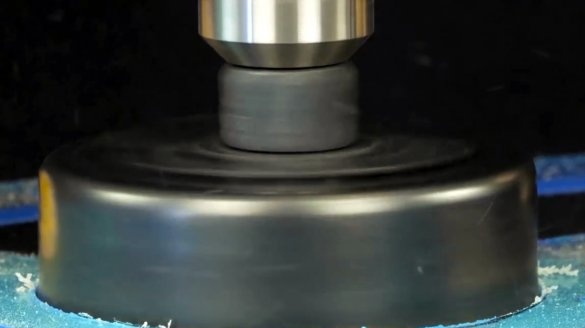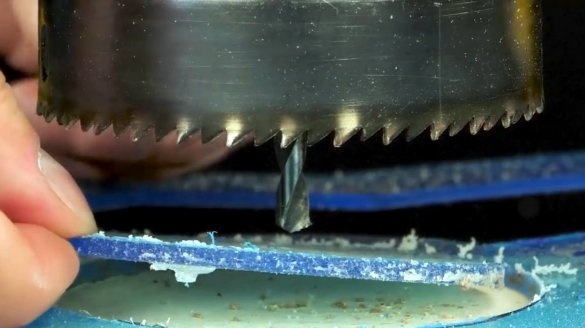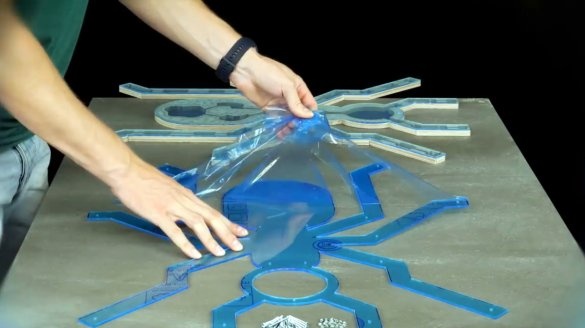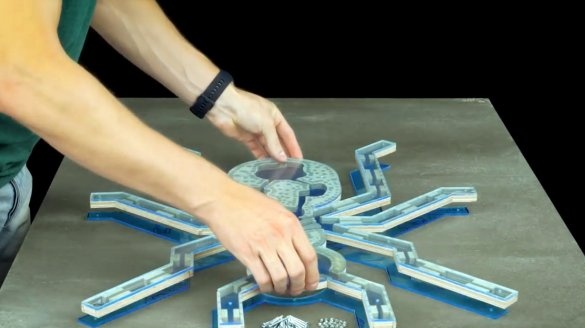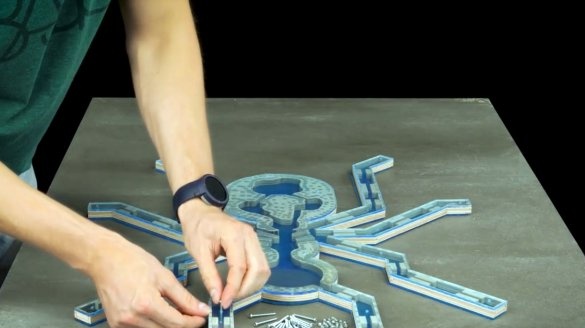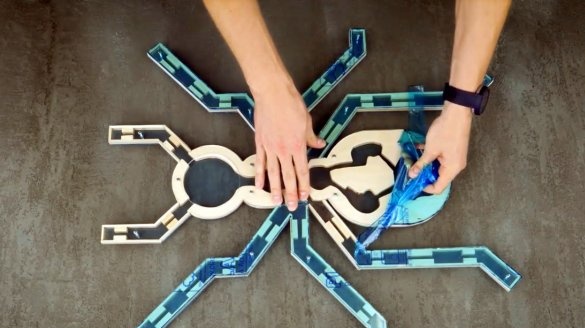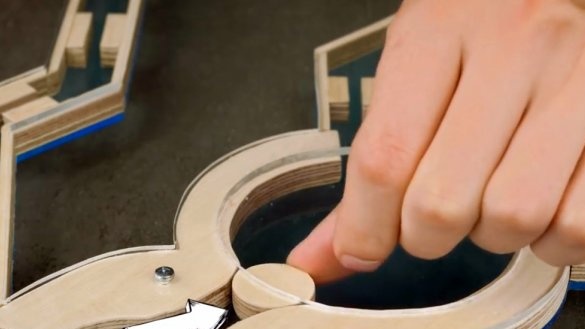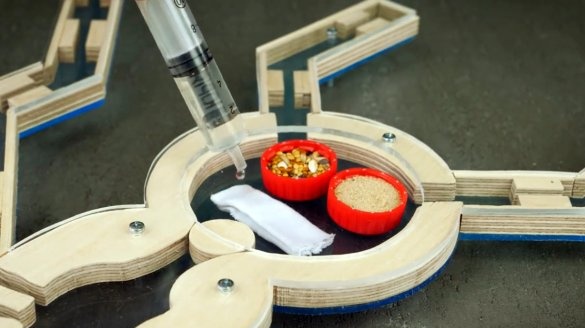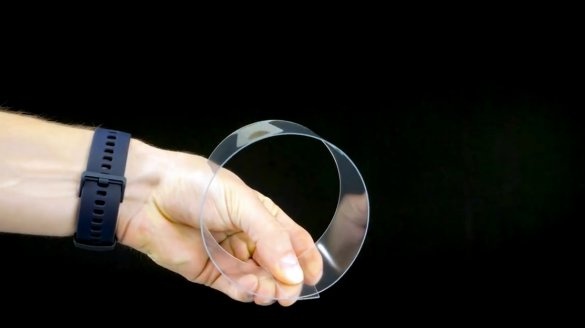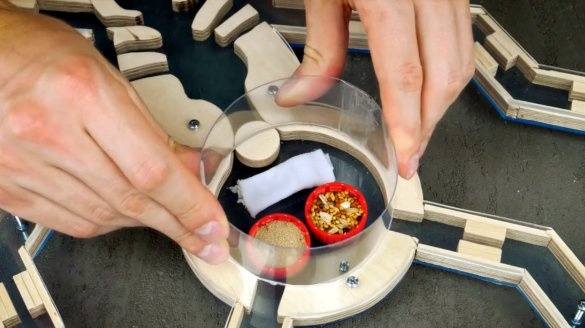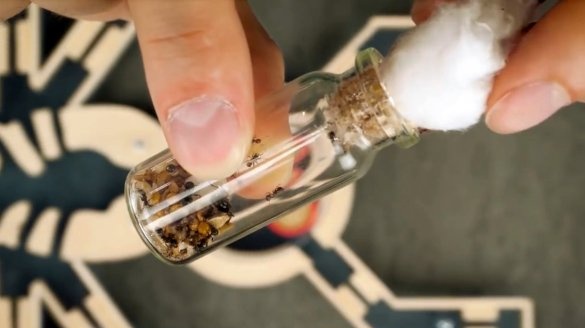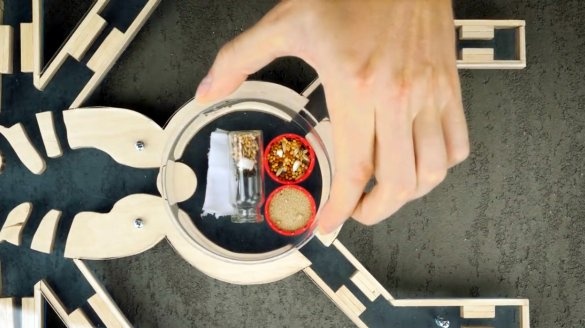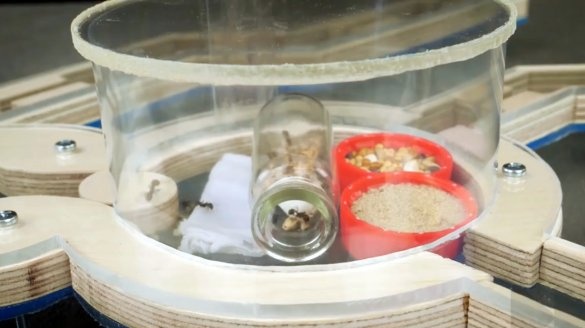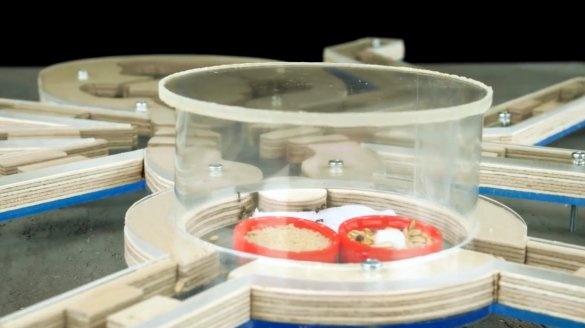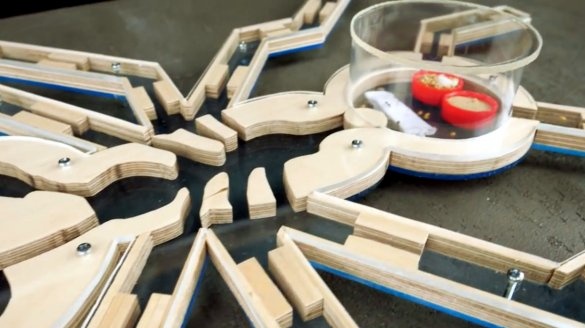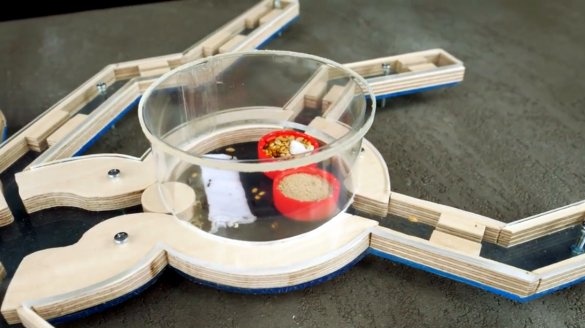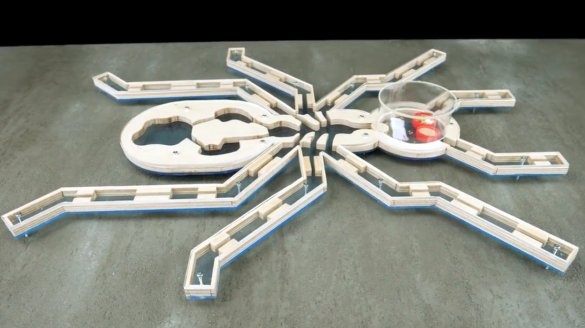Many of you have children of school or preschool age, and they are very fond of having different home pets. Usually these are all kinds of hamsters, parrots, cats. But all these animals are very noisy, and require careful care for them.
But what about insects, for example, ants? Yes, they are quiet, like fish, but how can we trace their life and the development of the colony?
In this article, the author of The Q, a YouTube channel, will tell you how he made a special ant farm.
This homemade product is quite simple to manufacture, and can be repeated at home with a minimum of tools.
Materials
- Plexiglass
- sheet plywood
- Acrylic glue
- Screws and nuts M2
- Bottle caps, bandage
- masking tape
- Sandpaper
- A sheet of paper A1.
Instruments, used by the author.
— Electric jigsaw
— Screwdriver, drill
— Crowns
- Vise, hacksaw
- Ruler, pencil, marker, compass.
Manufacturing process.
First you need to mark out the main drawing of the future farm. Its size and shape can be selected individually. The author puts a picture on a sheet of paper of A1 format (841 × 594 mm). This will be the outer contour.
Now, a sheet of plexiglass is placed on the sketch, protected on both sides by a film. Contours are transferred using a marker.
For this farm, two such plexiglass sheets will be required. They need to be connected together by masking tape at the edges.
After that, the master begins to cut parts along the contour with an electric jigsaw.
Since it has long and narrow segments, their edges need to be additionally fixed.
Then he transfers the outer contour to the plywood sheet.
The internal structure of the farm will have a fairly complex shape, and many small details. They should also be marked.
After cutting, all edges of the parts are processed with sandpaper.
Plexiglass blanks are disconnected, and only one protective film is removed from one of them.
Now, using acrylic glue, plywood blanks are attached to plexiglass.
As sides, the author will use thin strips of plywood. They should also be pre-marked and cut manually. It is important to make corner joints correctly by cutting the edges at an angle.
The beads are ready and can be glued to the base. Slots and openings are not permitted.
Small blocks are glued between the sides, which form separate sections.
After the glue dries, without removing the protective films, the author attaches a second blank, and marks the places for the connecting screws. Also marks the center and perimeter of the circumference of the main hall.
The holes for the connecting screws are drilled immediately through both sheets of plexiglass.
Then the top sheet is removed, laid on the substrate, and the hole in the main hall is drilled with a crown.
Now one protective film is removed from the lid, the truss body is assembled, and tightened with M2 screws and nuts. Moreover, the author uses fairly long screws that play the role of legs, lifting the entire structure above the table surface. It is advisable to put silicone pads on their tips, or apply a couple of drops of hot glue. This will prevent damage to the surface on which the farm will stand.
All drilling work has been completed and the remaining protective films can be removed from the bottom and cover.
The master made the farm very large. And in order to populate it gradually, he blocks a large section with the help of such a round of plywood. Such a stub can be made of another shape, the main thing is that there are no gaps.
Tanks with feed are installed in the main hall, a drinker will also be required.
To make the dome of the main hall, he made such a cylinder. It is necessary so that when feeding the colony, and adding water, to minimize the possibility of escape of the inhabitants.
Everything is ready, and ants can be populated. Do not forget about the cover, it can be cut from the remains of plexiglass.
Gradually, the ants scout the territory, and begin to develop a colony.
Once you see that the population has begun to increase, you will need to open the stub, giving residents access to the rest of the farm.
This home-made farm can be made from several sections of any shape. Also note that some types of ants can gnaw plywood boards, and escape.
Therefore, it is possible to make inserts and boards not of wood material, but of the same plexiglass, only of greater thickness. To facilitate manufacturing, you can draw all the contours of the project in any vector editor, and contact the advertising agency for cutting.
Thus, the quality of the parts will be very high, you just have to assemble them together.
There is another weakness in this particular design, namely, the connection of the “paws” and “torso”. They should be reinforced on the underside with an additional frame or sections.
Thanks to the author for the simple design of the ant farm. Such an interesting homemade product can please both kids and adults!
All good mood, good luck, and interesting ideas!
Author video can be found here.

